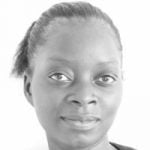When we think about aging, many of us picture a slow decline. Wrinkles. Fatigue. Invisibility. It’s a narrative that’s been deeply ingrained into our cultures and accelerated by modern media. But I think we’ve been sold the wrong story. What if aging well isn’t about trying to look younger, but about growing into our true selves with more presence and vitality?
In Zambia, and across many African and South Asian communities, there’s an unspoken anxiety around growing older — especially for women. We’ve inherited a belief that age equals irrelevance. That once we pass a certain milestone, we’re no longer seen or valued. As a Gujarati-Zambian woman navigating chronic illness and cultural expectations, I’ve had to confront these beliefs early and head-on. And I’ve come to one clear conclusion: aging well isn’t about appearance — it’s about energy.
I remember seeing women in their 40s and 50s who looked older than they were — worn down by labour, emotional burdens, and the pressure to always put others first. But times have changed. We now have access to better health knowledge, resources, and longer life spans thanks to medical advances. Yet the mindset around aging hasn’t evolved at the same pace. Many women still carry a quiet pressure to “catch up” with Western trends, trying to stay youthful through appearance instead of personal alignment.
Aging well, especially in our context, begins with redefining personal wellness. For me, it meant unlearning the idea that growing older is a loss. I’ve come to see it as refinement. My twenties were filled with noise and people-pleasing. But after turning 35, I stopped outsourcing my worth, and ironically, that’s when I began to feel my personal glow.
Our bodies do change, but that doesn’t mean we should retreat or shrink. It means we need to recalibrate. Women naturally lose muscle mass as we age, which increases the risk of fatigue, injury, and illness. For those of us with diabetes or genetic predispositions, this muscle loss can worsen insulin resistance and energy levels.
This is why aging well includes practical shifts. One of the most overlooked is protein. Ideally 30 grams within the first hour of waking. This helps preserve muscle and supports steady energy. Movement is another pillar: not for punishment, but preservation. Whether it’s walking, strength training, or dancing, movement keeps our bodies supple and our minds sharp.
Rest is equally essential — and one of the most misunderstood aspects of aging in our cultures. In many Zambian or Indian homes, rest, especially for women is seen as indulgent or even lazy. As a diabetic, there are days my body simply cannot function until my sugar stabilises. But lying down can be misread as weakness, especially where the expectation is to keep moving and keep serving.
Here’s what I’ve learned: rest is not weakness — it is wisdom. It is how we preserve ourselves, especially if we live with chronic conditions. When our mothers and grandmothers looked older than their years, it wasn’t genetics. It was exhaustion. It was the refusal to pause, not because they didn’t want to but because they felt they weren’t allowed to.
For many women, aging carries emotional and cultural weight. We’re expected to be caregivers, breadwinners, role models, and emotional anchors. That’s a heavy load. If we don’t set boundaries and honour our emotional needs, we risk repeating the cycle of burnout we saw in previous generations. And this leads to us giving from an ‘empty cup’. We are not showing up for our loved ones as the true version of ourselves.
In a world obsessed with youth, we’ve forgotten how to feel young. But vitality doesn’t come from products — it comes from clarity. Clarity about what brings you joy. Clarity about what drains you. And clarity about what you’re no longer willing to carry.
In my 20s, I used to love drinking strong coffee. Now I prefer green tea and early morning walks. I used to ignore emotional discomfort or confrontation. Now I pause, reflect, communicate my needs and surrender to what is. This is how I now protect my peace. That kind of shift isn’t about slowing down — it’s about becoming more deliberate. And it shows.
Aging well also means tuning into our hormonal and emotional cycles. Many women begin perimenopause in their 30s, long before anyone talks about it. Yet conversations around hormonal health, emotional fatigue, and midlife identity shifts remain rare in our communities. We need to normalise them.
You don’t need to look younger. You need to feel safer — in your body, your choices, and your lifestyle. That inner safety creates outer radiance. It strengthens your immune system, calms your nervous system, and deepens your joy. Your outer looks are a by-product of that this inner peace. To age gracefully is to age consciously. Not in resistance to time, but in a holy conscious relationship with it. Your routines may shift. Your boundaries may firm. But your essence becomes clearer.
So, instead of fearing the next decade, ask yourself this: what do I want the next ten years to feel like? That question is far more powerful than asking how you want to look. Because when you get that part right, your glow will follow, inside and out.
Kaajal Vaghela is a wellness entrepreneur, sportswear designer, and diabetes health consultant with over three decades of lived experience managing Type 1 diabetes. As the chairperson of the Lusaka branch of the Diabetes Association of Zambia, she is a passionate advocate for breaking down myths and building awareness about diabetes. For more information, check out: www.kaajalvaghela.com and for any feedback: [email protected]




















One Response
Well spelt out article. You reached and your findings are valid and educative. Keep it up by educating our generation and generations to come.